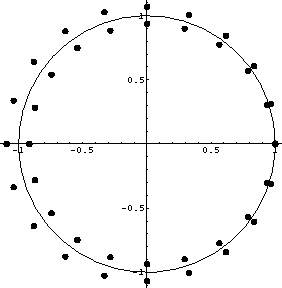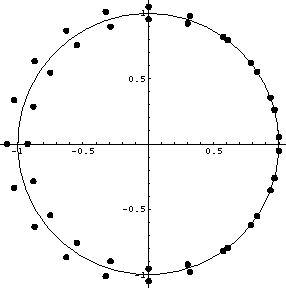|
lapl4
Figure 1 Roots of the Z transform representation of a Laplacian: P(Z)=ZN(-Z-N-Z-1+4-Z1-ZN). No roots are on the unit circle, except for Z=1 and all the roots appear in pairs that mirror each other with respect to the unit circle. |  |
|
lapl3
Figure 2 Roots of the Z transform representation of a pseudo-Laplacian:P(Z)=ZN(-Z-N-Z-1+3-Z1-ZN) Some of the roots are on the unit circle, therefore this is not a spectrum, and so it is not factorizable. |  |
A special case occurs when we have a pair of roots on the unit circle (see, for example, Z=1, Figure 1). A polynomial of this type can be factorized into minimum phase causal and anticausal parts, but the convergence of the Wilson-Burg algorithm becomes linear instead of quadratic and it may even get unstable, as originally pointed out by Wilson 1969.